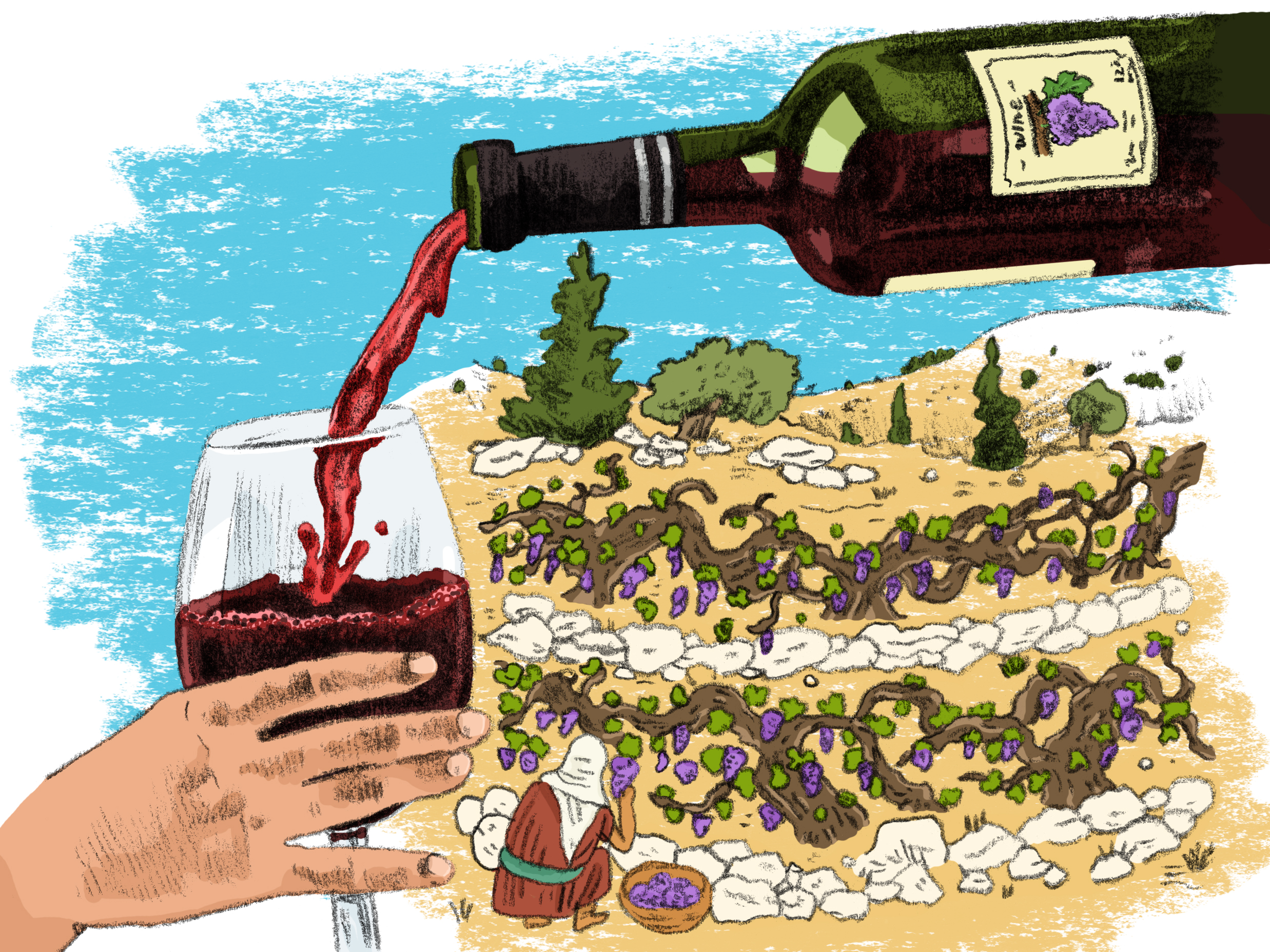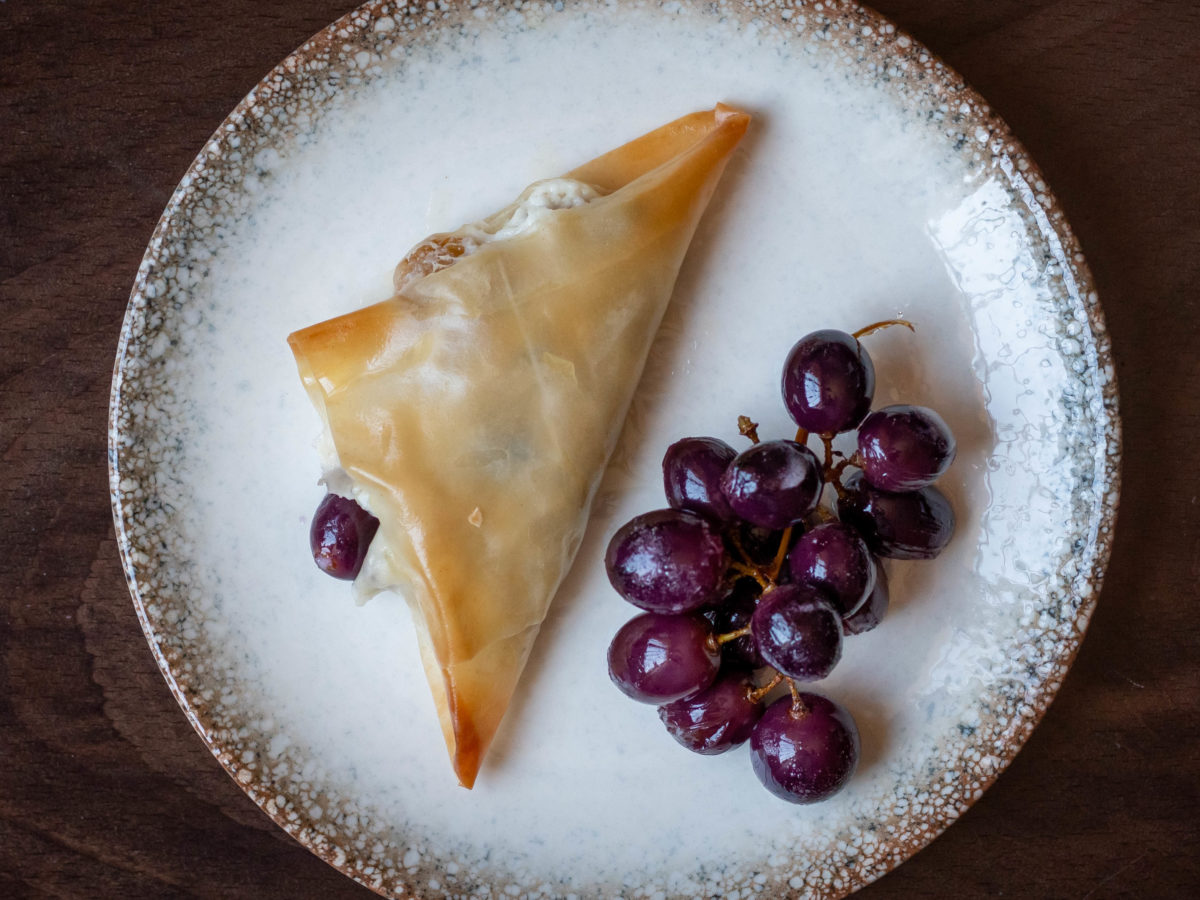Three elements determine the character of a wine. The first is, naturally, the basis for everything: the raw ingredient. The type of grape, both its variety and quality, form the basis for the production of any wine. The second element is the wine’s origin. The soil and the climate in which grapes are cultivated can sometimes have a greater impact than the grape variety. The third element is the hand that makes the wine, the winemaker’s fingerprint and their style of winemaking.
“Chaha-ve-ri” I gritted my teeth during my first visit to Georgia. “No, no,” my friend responded, “Chkha-ve-ri. The C and H combined together produce a completely new sound. Think of it as you would a new flavor.” During a week-long visit to wineries in Georgia, one may encounter more than 20 grapevine varieties they’ve never heard of, but usually it’s much more than that. Learning about these local varieties is a key tool when getting acquainted with new wines. It is the first peek into a country’s wine culture, allowing one to map out a terroir before delving deeper into its regions, sub-regions, and other such subtleties. It’s like learning to say hello in the local language when landing in a foreign country.
Generally speaking, these varieties, some of which are “heirloom” and have been grown in a place for generations and others that are native or indigeous to the region, are genetically close to the wild plants domesticated by man. They form the basis of the high genetic diversity that existed for thousands of years, expanding into regional cultivars according to the local culture and terroir.
In countries with a young wine culture, where winegrowing traditions are relatively recent, such as New Zealand, Australia, Canada, and the United States, there is often little discussion about local heirloom and indigenous varieties because there are few or none to speak of. In these countries we encounter mainly international varieties that dominate the majority of the world’s wine production like Chardonnay, Sauvignon Blanc, Cabernet Sauvignon, Merlot, etc. From this point of view, Israel is a unique case study: on the one hand it’s a new country with a new wine culture, and on the other, grape cultivation and winemaking traditions are deeply rooted in the local terroir’s history, dating back to ancient times.
This Is Not Europe
Like any new wine culture, the founders of Israel’s modern day wine culture turned their eyes to Europe and built the local industry in its image. The next generation followed in their footsteps, striving to excel using the same methods based on the same criteria used to evaluate wines in France and Italy. However, in the last decade, with the emergence of third generation winemakers — or perhaps the tribe’s elders coming of age — influenced by shifts taking place in the international arena, it seems that the Israeli wine industry has begun searching for a different identity, one that’s more local with wines that can tell the story of this place, it climate, terroir, and food.
Originally, the grapevine made its home in this region of the Fertile Crescent and the Caucasus. Evidence of the presence of wine in the Land of Israel dates back about 6,000 years and stories about wine production are documented in the Bible and rabbinic literature. Due to Islam’s ban on alcohol consumption, the grapevine industry in the region was centered on grapes only as a foodstuff for over a millennia. This included the production of dibs (grape honey), grape vinegar, antbikh (grape jam), malban (grape leather), raisins, and more.
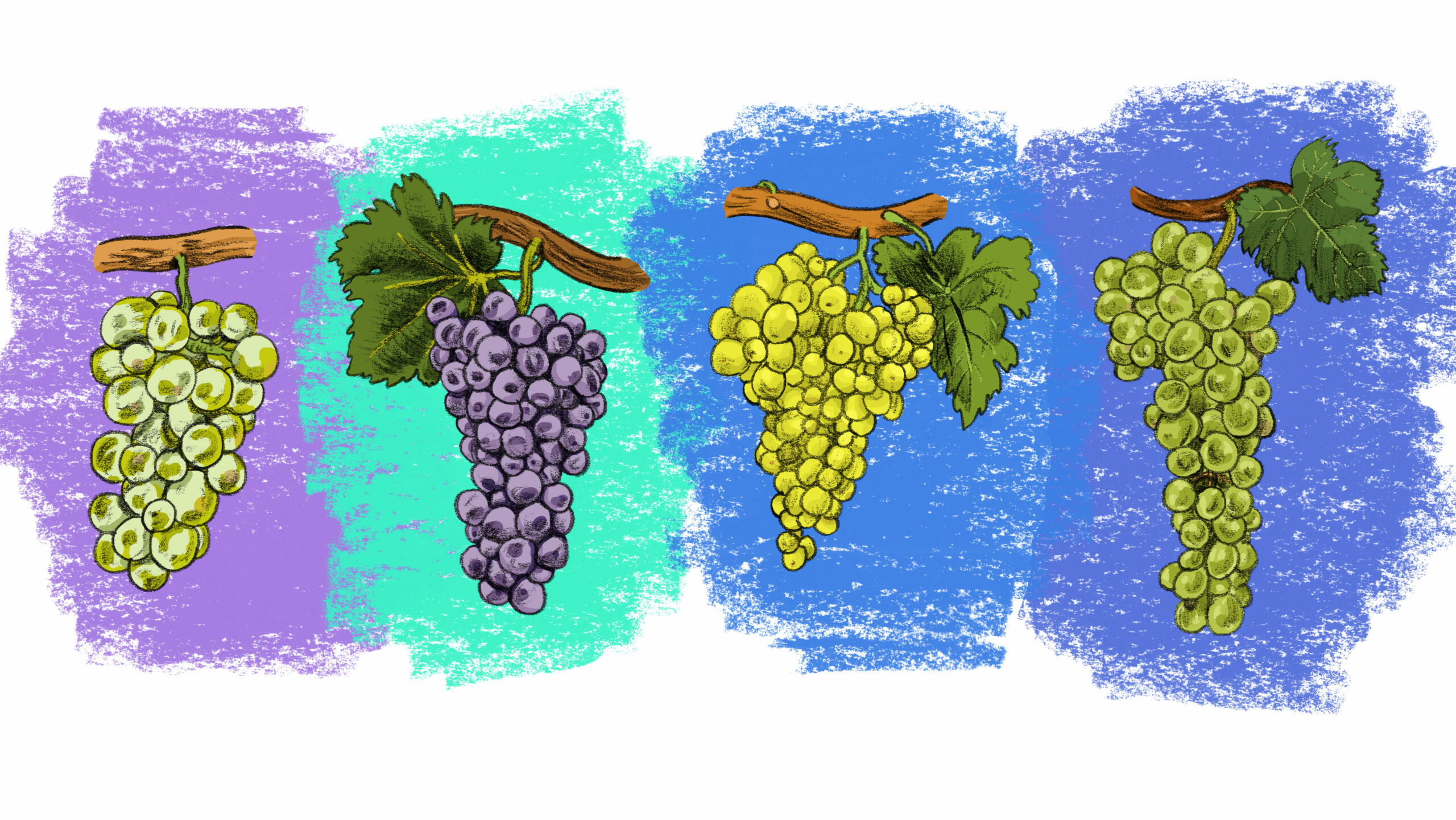
Growing high-quality table grapes differs from growing high-quality wine grapes. The main requirements for table grapes are for large fruit and clusters, consistent grapes that will produce a high yield, have no seeds, and of course, taste good. Wine grapes are more complex. There is more attention to the type of soil in which the vines are planted, the variety, the method of cultivation, the size of the seed and berry, the concentration of the fruit, the sugar content and acidity, and more. “Wine grape varieties will soften towards the harvest, while table grapes tend to keep their shape and firmness,” says Noa Meroz, the chief agronomist of Israel’s Wine Grapes Board. “Thin skin, for example, is considered a positive trait in wine grapes but less so for table grapes, and it is especially important that the grapes accumulate sugar and retain acidity — two critical properties for producing quality wine with alcohol and body.” In black grapes (red wine), the ability to produce color is also an important factor.
The need to produce table grapes meant a wide range of varieties better suited for wine were not planted or cultivated in the region for hundreds of years. The local varieties have therefore undergone selection — natural or artificial — in order to adapt for the cultivation of table grapes.
During the last decade the wine industry in Israel has matured, the desire to learn and shape a local wine tradition is on the rise, and the issue of indigenous along with heirloom or heritage varieties has entered the conversation, bringing with it the desire to identify the local varieties best suited for the local wine industry. This is a two-step process: the first step is to identify the grape variety based on its genetic structure. This can be a newly discovered grape or one that has been in use but without winemakers knowing the name. The second step is to try and grow it and observe its reaction to the wine production process.
From Table to Wine Grapes
The first winery that began working with such varieties was Cremisan, located in Beit Jala, a Palestinian town near Bethlehem. Cremisan has been working with local varieties since it began producing wines in 1885, however, not all the varieties had clear names and identities. For his enology and viticulture studies in Italy, Fadi Batarseh, today Cremisan’s chief winemaker, submitted a thesis researching heirloom grape varieties in the area where he grew up, around Beit Hanina in East Jerusalem. Some of the varieties he researched survived as table grapes and some, it seems, survived as wine grapes that were used in home production of arak and wine. He conducted a genetic analysis and found that of the 64 vines collected, 21 different varieties were identified, among them are all the Palestinian heritage varieties known today in the local literature, as well as other varieties, who’s knowledge of which is, still to this day, only passed by word of mouth. All of the varieties are mentioned in Batarseh’s compelling work, which has unfortunately received little attention in Israel: Bittuni, Baluti, Zeini, Shami, Rumi, Darawashi, and more. Of these, Batarseh chose four varieties for Cremisan Winery: Dabouki, Hamdani, Jandali and a red variety known simply as “Baladi,” meaning heirloom. In 2010 he began producing Cremisan wines under their new name (see more below). Today’s heritage varieties for Cremisan are cultivated mainly around Palestinian villages in dry-farmed vineyards (without irrigation except for rainwater), using traditional methods that are suitable for the local climate, such as pergola or trellising.
At the same time as Batarseh conducted his research, Dr. Eliyashiv (Shivi) Drori, head of The Samson Family Institute of Grape and Wine Research at Ariel University, set out on a journey across Israel, from Dan to Eilat, in the hope of finding heritage grape varieties that could be used by the local wine industry. With the support of the Jewish National Fund and the Ministry of Science, and together with students, assistants, and partners, Drori collected about 600 vine samples, of which 92 different varieties were identified after genetic analysis. After taking into account the properties of the grapes’ ability to accumulate sugar, acidity and pigment, 10 varieties were selected to undergo genetic engineering against viruses before they could enter the commercial market. Among these varieties are, of course, some of the varieties that were mentioned in Batarseh’s research, joined by several more that were discovered in Drori’s research and were given Hebrew names: Yael, Be’er, Saida, Moshe, and Zuriman (some of these names may be temporary).
This journey to explore the local heritage grape varieties and the forging of a new local wine identity is as exhilarating as it is challenging. Local winemakers not only have far more experience working with international varieties than these local varieties, but there’s also greater access to information about working with varieties from Europe. Working with local varieties will likely prove to be a much more challenging and lonely experience.
For those working in Israel’s wine culture, a journey of trial and error, wonder and discovery, is ahead of us. This process requires patience from consumers, as well as the wineries and winemakers. For example, researchers and winemakers who have found that the local red varieties tend to produce lighter red wines with lower tannins and alcohol concentration. They’re not the Cabernet Sauvignon or Nebiolo the market knows, but perhaps we will find out that the terroir knows what is best.
The transition to heirloom grape varieties is an extremely important one, not only culturally and historically, but also environmentally. All over the world, those who work with heritage varieties report that the local strains respond better to weather changes and extreme climate phenomena — afterall, these varieties have adapted to the terroir for generations. Asking a Riesling or Sauvignon Blanc to adapt to the Israeli climate, for example, is very different to a historically local variety that is familiar with the local climate conditions to begin with.
Get to know these heirloom and inidgenous grape varieties and the winemakers working with them below. You can find all of the recommended bottles at Cafe Asif’s deli.
Heirloom Grape Varieties: White Wines or Vermouth
Marawi / Hamdani – Varieties for Lush Mineral White Wines
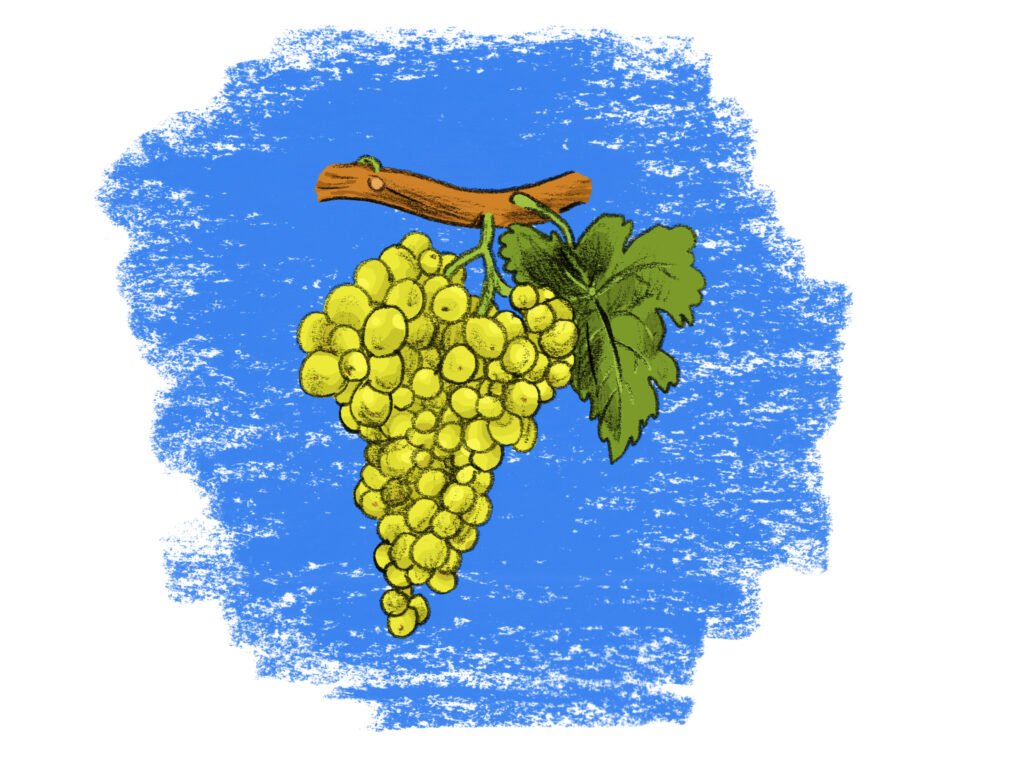
Marawi and Hamdani are commonly thought of as two different names for the same variety. However, genetic analysis shows that while they are very similar, but not the same. In order to gauge these differences, both varieties will need to be used more widely, studied, and examined scientifically. Until then, wine producers continue to treat them as a single variety. This variety produces large clusters and grapes, accumulates sugar well and has good acidity. It tends to produce lush white wines with medium body, mineral and slightly salty aromas, with no floral or tropical notes.
Cremisan Winery produces a blend of Hamdani and Jandali that has gained popularity since it was released a decade ago, and in 2014 Recanati Winery came out with a 100% Marawi grape varietal wine.
Try: Cremisan Winery, Hamdani & Jandali; Recanati Winery, Marawi,
Dabouki — The Most Common Variety
“The Dabouki has been around since before the Roman Empire,” says Avi Feldstein, who’s been working with the variety since 2014 at Feldstein Winery. “There is no obligation to produce wine from local varieties, but if wine reflects the local terroir and the local variety is readily available, how can we not use it?” Of all the heirloom varieties on the list, Dabouki is the most common and widely used in the local table grape industry. It is also known to have a relatively neutral flavor, which accounts for its wide use in the production of arak both here and in Lebanon. Winemaker Amit Toledo explains that in addition to being local, its neutrality is one of the reasons he chose to use it in his vermouths. But one must assume that the more this variety is used for the production of quality wines, the more we will discover what it has to offer. “I believe that education is stronger than genetics,” says Feldstein. “I am sure that if we invest in it as we invest in other varieties, cultivate it for the production of quality wines, and allocate it better vineyards and plots, we will see great wines come out of it.”
Try: Feldstein Winery, Dabouki; Amit Toledo, Vermouth; Cremisan Winery, Dabouki
Jandali – A Grape Variety for Blending
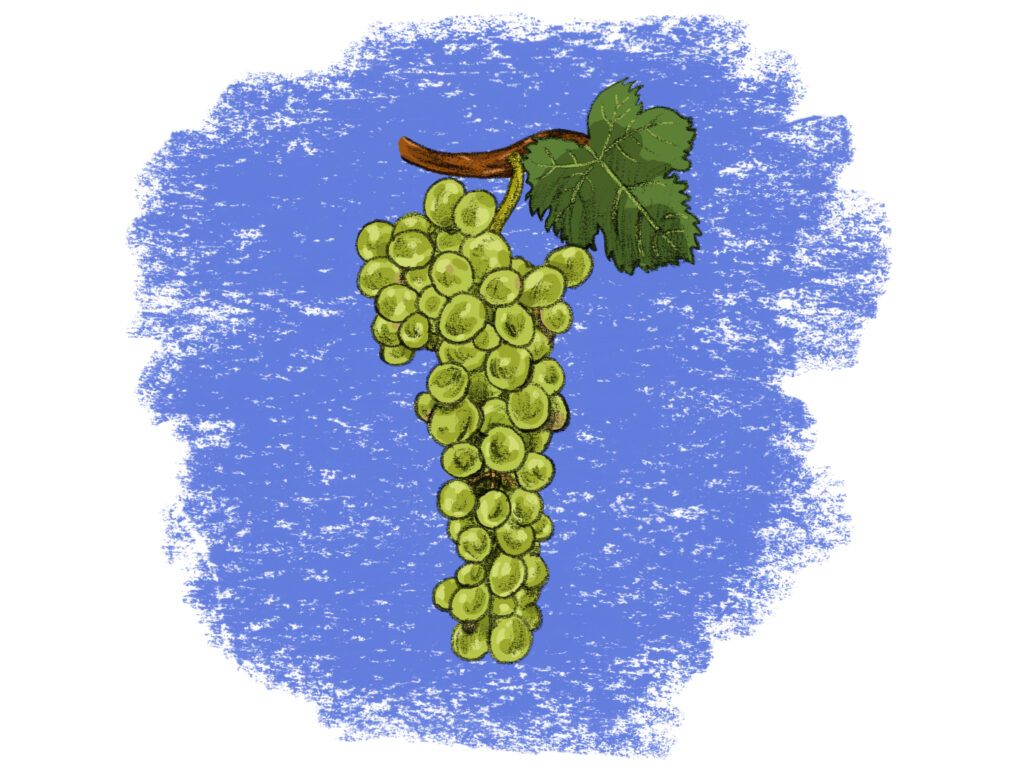
Jandali is a white variety with relatively small grapes and thin elongated clusters that take on a greenish hue when ripe. This is a sturdy and strong vine, hence its name, which means “strong” or “strong rock” in Arabic. The fruits have difficulty developing high sugar levels which can be a bit challenging, but they are semi-aromatic and have plenty of fruity and floral aromas. Historically, Jandali was a common table grape variety, but over the years it has been replaced by the popular Dabouki.
Try: Kerem Barak, Jandali, Pet-Nat
Zeini – A Variety With High Acid and Good Sugar
In Arabic, Zeini means something beautiful or that holds beauty. This heirloom variety has relatively large oval grapes, is grown mainly for table grapes, and most of what’s known about it is passed down through word of mouth. But Zeini has been blessed with a very good ability to accumulate sugar and high acidity, both desirable properties for the production of wine. Canaan Khoury of Taybeh Winery is the only winemaker to produce a varietal wine from this grape and he shares that it produces a very pleasant light- to medium- bodied wine with aromas of green apple and ripe pears.
Try: Taybeh Winery, Zeini Blanc
Be’er — A Semi-Aromatic White
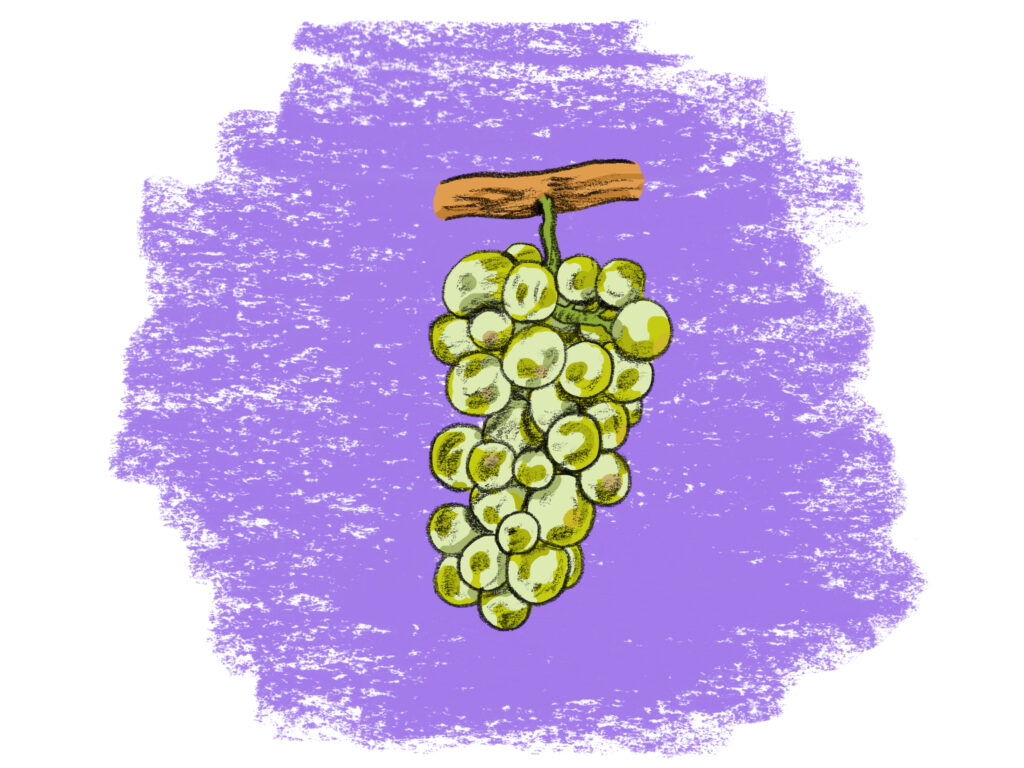
A semi-aromatic white grape variety with small grapes and clusters, which got its name, meaning “well” in Hebrew, after it was found growing in an ancient well at Palmachim Beach. Barkan was the first winery to come out with a wine produced from this grape, and since 2021 they have been producing a Be’er wine as part of their Beta series. “This is a wonderful wine grape variety, we are very satisfied with it and are looking forward to seeing what else the variety can yield in the future,” said Ido Lewinsohn, the winery’s chief winemaker. Both Levinson and Drori are very excited about Be’er and its potential. In addition to its organoleptic properties (regarding its flavor and smell), it is also resistant to grape wilt — a fungal vine disease.
Try: Barkan Winery, Be’er from the Beta Series
Heirloom Grape Varieties: Red Wines
Bittuni — A Variety With Mild Red Fruit Aromas
A purple-black variety with large grapes, thin skin, and naturally loose clusters. According to Drori, this is a highly-valued variety in the Arab world thanks to its ability to accumulate high quantities of sugar. It has medium acidity and soft tannins. Kobi Arviv, Recanati Winery’s chief winemaker, has been working with the variety since 2016 and says that the wine produced from this variety has mild red fruit and floral aromas, and adds: “In my impression, it is also less sensitive to mold and decay than other international varieties.”
Try: Recanati Winery, Bittuni; Taybeh Winery, Bittuni
Baluti – Bittuni’s Genetic Brother
As in the case of Hamdani and Marawi, it is very possible that Baluti is Bittuni’s genetic brother – as suggested by both Batarseh’s and Drori’s research. As of today, their differences are minor and for the time being it would seem that Bittuni is favored for wine production. “It is possible that when it enters commercial use, we will realize this variety acts differently, but at this stage it is difficult to tell. The more these varieties are used for the production of wine, the more we will understand,” says Drori.
Zuriman — For Light Astringency and Herbaceous Flavors
Zuriman is named after the place where it was discovered: the Zurman ruins in a Circassian village in the Golan Heights. It is a black grape variety with vigorous growth. Guy Eshel, Dalton Winery’s winemaker is producing the first commercial wine from this variety, set to be released in September 2022. “This variety tends to ripen late, it has a light astringency and a grassy flavor, like wild raspberries,” he says. “It seems to be suitable to the area and it is slightly more resistant to the climate and pests. It is clear it feels comfortable here.” It reaches medium sugar levels and thus produces an easy-to-drink red wine that is relatively low in alcohol.
Try: Dalton Winery, Zuriman from the Asufa series
Yael – Reminiscent of Sangiovese
Yael is a new variety found in recent years growing wild, climbing on trees in the sands near Nitzan, not far from the coast. It is characterized as having small black berries in small clusters, and a high concentration of color and fruit. It is expected to produce light to medium bodied red wines. Drori describes it as somewhat reminiscent of the Italian Sangiovese variety. There are no varietal wines currently available on the market, but it is already available for planting — so we must be patient a little longer.
Red Saida – Currently Unavailable Commercially
A red variety with relatively small berries and thin small clusters, this variety produces a strong color in wine, but it hasn’t been used enough yet for us to fully understand its capabilities. It’s currently undergoing genetic engineering by the Israel Wine Grapes Board, and once this process is completed seedlings will become commercially available.
Moshe — One That Produces a Strong Red Color
This variety only has a temporary name, but Drori couldn’t hide his excitement when he told us about it. “It has the deepest color I’ve seen so far in all the varieties we found, with excellent acidity and flavor. We still need to understand more about it in terms of genetics, but it is of great interest to us and we are already preparing it for commercial use.”
Argaman — A Surprising Israeli Hybrid
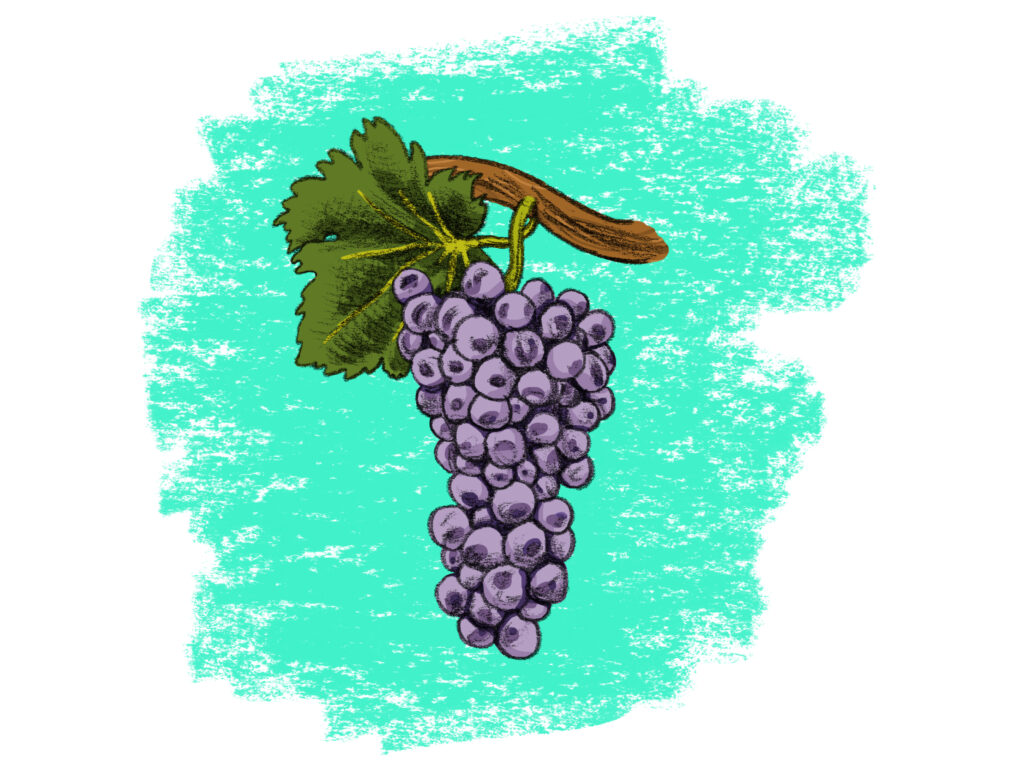
Argaman was conceived in the 1970s as a hybrid with the intention to produce a productive, high-yield red strain. It is a cross between Carignan and Sezão (a bright colored Portuguese variety) created by professor Pinchas Spiegel on behalf of the Volcani Center. Up until then, explains Feldstein, “cheap wines in Israel were wineries’ defective wines. The option of producing a popular cheap wine that would taste good didn’t occur to anyone.” To this end, they created Argaman and Segal was the first winery to work with the grape. “They first produced a wine they simply called ‘red wine’,” recalls Feldstein, the winery’s winemaker at the time, who has worked with the grape since the very beginning and fell in love with the variety. “I think the Volcani Center got a lot more than they could wish for with Argaman.” When Feldstein left Barkan-Segal Winery, he continued to produce Argaman wine under the brand that bears his name.
Since the late 90’s, when Segal began producing Argaman, quite a few bottles remained and so, it turns out that this variety also ages wonderfully and, as Feldstein explains, the variety returns are much higher than what was originally intended. For some reason, despite the fact this variety has been available in Israel for almost five decades, it is not well known even among local wine lovers. “It is rich in flavor and color, with high acidity, soft tannin and low alcohol. It’s an incredible Israeli variety but the public doesn’t know it yet like Cabernet or other varieties,” adds Lewinsohn, Barkan Winery’s chief winemaker, who continues to work with this variety to this day.
Try: Feldstein Winery, Argaman; Barkan Winery, Argaman; Jezreel Winery, Argaman
Natalie Shafrir is a Gastronomic Sciences graduate and the owner of Asis Wines, a natural wine import and distribution company. She has been active in the culinary field for a decade and her articles have been published in a variety of publications in Israel and around the world.
